Peter Greenaway is an influential British filmmaker known for his provocative and unconventional approach to cinema.
His films are often characterized by their complex, multi-layered narratives, stunning visuals, and use of symbolism and allegory.
Peter Greenaway’s films are a must-watch for anyone interested in innovative and thought-provoking cinema, and his contributions to the world of filmmaking continue to inspire and influence filmmakers around the world.
Best Peter Greenaway Films
Here are some great movies from Peter Greenaway.
1. The Falls (1980)
“The Falls” is a film directed by Peter Greenaway, released in 1980. It is a mockumentary-style film that follows the story of 92 survivors of a mysterious event in which gravity temporarily ceased to function, causing them to float in the air.
The survivors, known as the “Affecteds,” are interviewed by a fictional organization called the Falls Research Bureau, which is trying to document and categorize the event and its aftermath.
The film is structured around a series of interviews with the Affecteds, each of whom has developed a unique obsession or talent as a result of the event.
These include a man who has developed an encyclopedic knowledge of birds, a woman who has become obsessed with the color blue, and a man who has developed an insatiable appetite for books.
As the film progresses, the focus shifts from the Affecteds to the researchers themselves, who become increasingly obsessed with the event and its significance.
https://www.youtube.com/watch?v=zf4GHp61qdg
The film is interspersed with fictional documents, diagrams, and statistics, creating a sense of authenticity and scientific rigor.
“The Falls” is notable for its experimental style, which combines elements of documentary, satire, and surrealism.
The film’s themes include the nature of obsession, the role of documentation in shaping history, and the absurdity of trying to understand or categorize the inexplicable.
It has been praised for its creativity and originality, and is considered a landmark in avant-garde cinema.
- Timothy Quay, Stephen Quay (Actors)
- Peter Greenaway (Director)
- English (Publication Language)
- Audience Rating: Unrated (Not Rated)
2. The Draughtsman’s Contract (1982)
“The Draughtsman’s Contract” is a 1982 film directed by Peter Greenaway. The film is a surreal and provocative period piece set in 17th century England.
It follows Mr. Neville, a talented and arrogant draughtsman, who is hired by Mrs. Herbert to create a series of drawings of her estate.
Neville strikes a deal with Mrs. Herbert: he will create twelve drawings in exchange for sexual favors with her. However, as Neville proceeds with his work, strange events begin to unfold, leading to unexpected consequences.
Here are three reasons why you should watch “The Draughtsman’s Contract”:
A unique and visually stunning film: “The Draughtsman’s Contract” is a visually stunning film that showcases the unique and creative vision of director Peter Greenaway.
The film is full of lush landscapes, intricate costumes, and inventive camera work, making it a feast for the eyes.
If you like Peter Greenaway’s work, on our sister site AuteurGraph we have a profile page, a visual film timeline, and a ratings page that gives a tonne of info and data about their career in a visualized form.
A complex and challenging narrative: The film’s narrative is complex and challenging, with many twists and turns that keep the audience guessing.
It deals with themes of power, sexuality, and the nature of art, making it a thought-provoking and intellectually stimulating experience.
A showcase of talented actors: “The Draughtsman’s Contract” features a talented cast of actors, including Anthony Higgins as Mr. Neville and Janet Suzman as Mrs. Herbert.
The performances are nuanced and captivating, adding depth and complexity to the film’s already rich and intriguing story.
Overall, “The Draughtsman’s Contract” is a unique and visually stunning film that offers a complex and challenging narrative, showcasing the talents of a talented cast and the creative vision of director Peter Greenaway.
It is a must-watch for fans of surrealist cinema, period pieces, and anyone interested in exploring the themes of power, sexuality, and the nature of art.
- Anthony Higgins, Janet Suzman, Anne-Louise Lambert (Actors)
- Peter Greenaway (Director)
- Audience Rating: R (Restricted)
3. A Zed & Two Noughts (1985)
“A Zed & Two Noughts” is a 1985 film directed by Peter Greenaway.
The film follows the lives of twin brothers who are both obsessed with death and decay, and become involved with a woman who shares their interests.
One of the notable characteristics of the film is its use of symmetrical imagery and visual motifs.
The film is shot in a highly stylized and formalistic manner, with carefully composed shots and recurring patterns that create a sense of visual harmony.
This attention to symmetry and formalism is a hallmark of Greenaway’s work and helps to give the film a unique and memorable visual style.
Another characteristic of the film is its exploration of themes related to mortality, decay, and the human body. The film delves into the obsessions of the main characters, who are all fixated on death and the decay of organic matter.
The film’s exploration of these themes is highly stylized and often surreal, with imagery that is both beautiful and disturbing.
Finally, the film is notable for its use of black humor and satire. The film takes a satirical approach to the themes of death and decay, and the characters are portrayed with a sense of ironic detachment. This creates a tension between the macabre subject matter and the playful tone of the film.
Overall, “A Zed & Two Noughts” is a visually stunning and thematically rich film that explores the darker aspects of the human condition with a playful sense of irony.
Its symmetrical imagery, exploration of mortality and decay, and use of black humor and satire make it a unique and memorable viewing experience.
- Brian Deacon, Eric Deacon, Andra Ferrol (Actors)
- Peter Greenaway (Director) - Peter Greenaway (Writer)
- Audience Rating: NR (Not Rated)
4. The Belly of an Architect (1987)
“The Belly of an Architect” is a 1987 film directed by Peter Greenaway. The film is a psychological drama that follows an American architect, Stourley Kracklite, as he travels to Rome to oversee an exhibition on the work of the French architect Étienne-Louis Boullée.
Kracklite’s mental and physical health begin to deteriorate as he becomes obsessed with the idea that his wife is having an affair and that his own work is inferior to that of Boullée.
Here are three reasons why you should watch “The Belly of an Architect”:
A unique and visually stunning film: “The Belly of an Architect” is a visually stunning film that showcases the unique and creative vision of director Peter Greenaway.
The film is full of striking imagery, intricate sets, and innovative camera work, making it a feast for the eyes.
A powerful exploration of the human psyche: The film delves deep into the psyche of its protagonist, exploring themes of obsession, paranoia, and artistic obsession.
The character of Stourley Kracklite is expertly portrayed by Brian Dennehy, who delivers a powerful and nuanced performance that captures the complexities of the human mind.
A rich and thought-provoking story: “The Belly of an Architect” is a rich and thought-provoking story that explores themes of art, architecture, love, and mortality.
The film’s engaging and multi-layered narrative keeps audiences captivated throughout, and its many twists and turns make it a must-watch for fans of psychological dramas.
Overall, “The Belly of an Architect” is a unique and visually stunning film that offers a powerful exploration of the human psyche.
Its rich and thought-provoking story, combined with its striking visuals and compelling performances, make it a must-watch for fans of independent cinema and anyone interested in exploring the complexities of the human mind.
- The Belly of an Architect ( Il ventre dell' architetto ) (Blu-Ray & DVD Combo)
- The Belly of an Architect
- Il ventre dell' architetto
- Lambert Wilson, Marino Masé, Marne Maitland (Actors)
- Peter Greenaway (Director) - The Belly of an Architect ( Il ventre dell' architetto ) (Blu-Ray & DVD...
5. Drowning by Numbers (1988)
“Drowning by Numbers” is a 1988 film directed by Peter Greenaway. The film tells the story of three generations of women who all drown their husbands and the local coroner who becomes obsessed with solving the murders.
One of the notable characteristics of the film is its use of intricate visual and narrative structures.
The film is divided into three parts, each focusing on a different generation of women and their murders. The narrative structure is highly stylized, with each section featuring repeating patterns and motifs that tie the stories together.
Another characteristic of the film is its use of dark humor and satire. The film takes a tongue-in-cheek approach to the murders, and the characters are portrayed with a sense of ironic detachment.
This creates a sense of tension between the macabre subject matter and the playful tone of the film.
Finally, the film is notable for its strong visual style. The film is shot in a highly stylized and surreal manner, with striking imagery and bold color palettes.
The visuals help to create a dreamlike atmosphere that reinforces the film’s themes of obsession and desire.
Overall, “Drowning by Numbers” is a visually stunning and thematically rich film that explores the dark side of human nature with a playful sense of irony.
Its intricate narrative structure, dark humor, and striking visual style make it a unique and memorable viewing experience.
- Drowning By Numbers (1988) (Blu-Ray & DVD Combo)
- Drowning By Numbers (1988)
- Joan Plowright, Juliet Stevenson, Joely Richardson (Actors)
- Peter Greenaway (Director)
- English (Subtitle)
6. The Cook, the Thief, His Wife & Her Lover (1989)
“The Cook, The Thief, His Wife & Her Lover” is a British film directed by Peter Greenaway and released in 1989. The film is a darkly satirical and visually striking exploration of love, betrayal, and violence set in a lavish restaurant.
The film stars Michael Gambon as Albert Spica, a brutish and violent gangster who owns and frequents a posh restaurant with his wife Georgina (Helen Mirren).
When Georgina begins an affair with a regular customer named Michael (Alan Howard), a game of cat-and-mouse ensues as the lovers try to keep their affair hidden from Albert.
The film is celebrated for its stunning visuals and vivid use of color, with each room in the restaurant having its own color scheme that reflects the characters and themes of the story.
The film also features a memorable score by Michael Nyman, which further enhances the film’s themes of power, sex, and violence.
“The Cook, The Thief, His Wife & Her Lover” is widely regarded as one of Greenaway’s best films and has become a cult classic.
The film’s unique style and provocative subject matter continue to captivate and intrigue audiences to this day.
- THE COOK, THE THIEF, HIS WIFE AND HER LOVER DVD
- RARE HARD TO FIND MINT CONDITION LIKE NEW MOVIE
- BUY FROM THE TOP 100 % POSITIVE FEEDBACK SELLER
- SAME DAY SHIPPING IF PURCHASED BEFORE 5 PM
- CHECK OUT ALL OF OUR RARE DISCONTINUED VIDEO GAMES, BLU RAYS & DVDS
7. Prospero’s Books (1991)
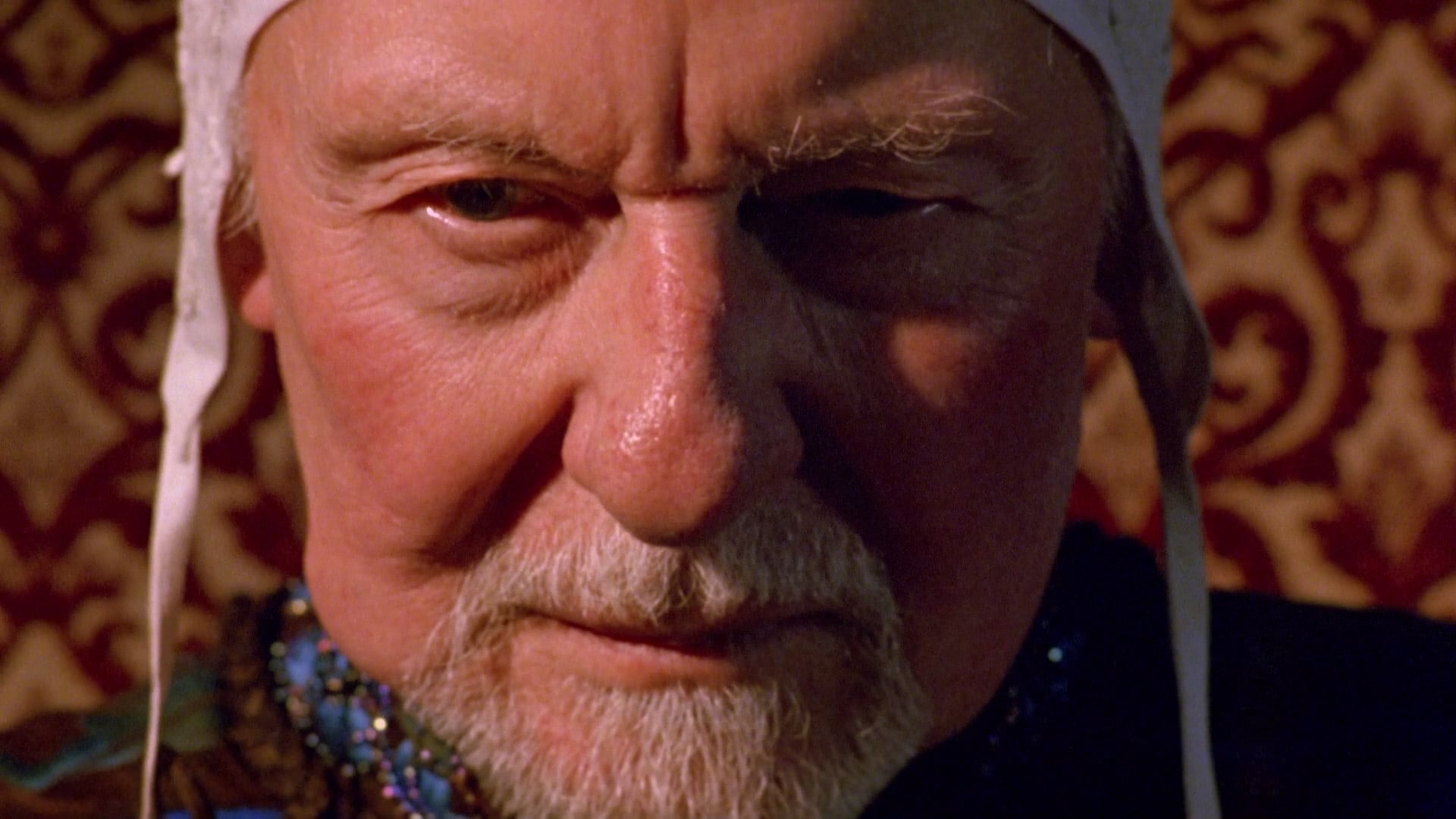
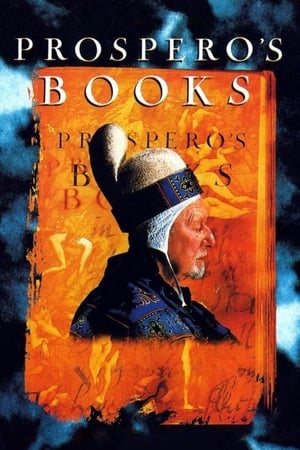
Prospero's Books
A magician's spell, the innocence of young love and a dream of revenge unite to create a tempest.
1991 • 2h 0min • ★ 6.8/10 • Japan
Directed by: Peter Greenaway
Cast: John Gielgud, Michael Clark, Michel Blanc, Erland Josephson, Isabelle Pasco
An exiled magician finds an opportunity for revenge against his enemies muted when his daughter and the son of his chief enemy fall in love in this uniquely structured retelling of the 'The Tempest'.
“Prospero’s Books” is a British film directed by Peter Greenaway and released in 1991. The film is an adaptation of William Shakespeare’s play “The Tempest” and is a visually stunning and experimental exploration of the themes of the original text.
The film stars John Gielgud as Prospero, the deposed Duke of Milan who has been exiled to a magical island.
Using his powers of sorcery and illusion, Prospero seeks to bring his enemies to justice and restore his place as ruler of Milan.
What sets “Prospero’s Books” apart is its innovative use of layered imagery and computer-generated effects.
https://www.youtube.com/watch?v=rp6ZYCSiPhA
The film features multiple images and narratives unfolding simultaneously, creating a richly textured and complex viewing experience.
The film also features a memorable score by Michael Nyman that further enhances the film’s themes of power, magic, and transformation.
Despite its experimental nature, “Prospero’s Books” received critical acclaim and has become a cult classic. The film is a testament to Greenaway’s unique approach to filmmaking and his ability to push the boundaries of what is possible in cinema.
- Prospero's Books - Los Libros de Prospero - Peter Greenaway - John Gielgud.
- John Gielgud, Michel Blanc, Erland Josephson (Actors)
- Peter Greenaway (Director) - Prospero's Books ( 1991 ) ( L'ultima tempesta ) (Producer)
- Spanish (Subtitle)
- English (Publication Language)
8. The Baby of Mâcon (1993)
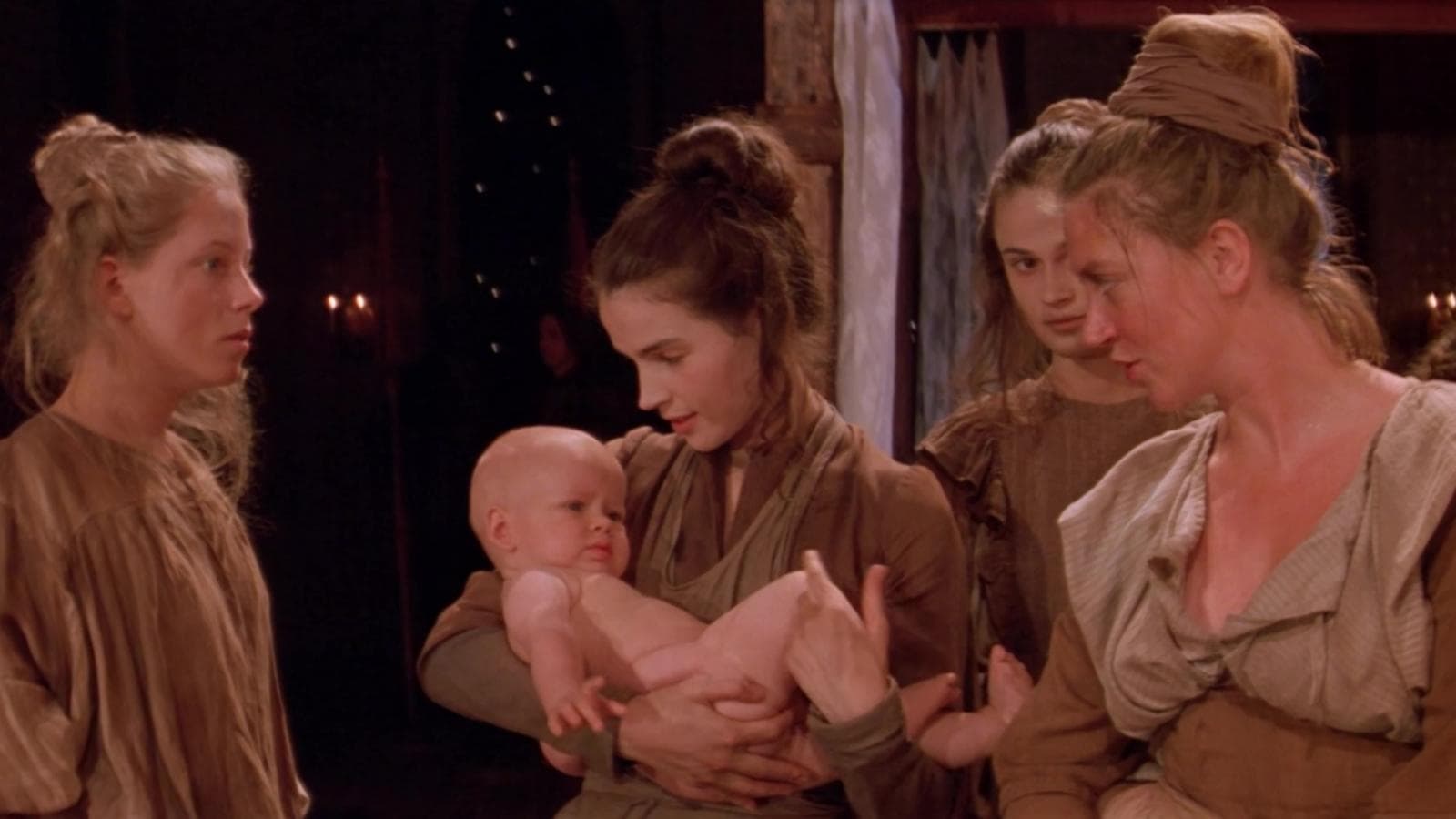
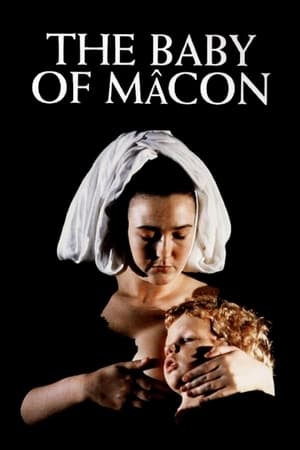
The Baby of Mâcon
Exploring thoroughly modern taboos
1993 • 2h 2min • ★ 6.975/10 • France
Directed by: Peter Greenaway
Cast: Julia Ormond, Ralph Fiennes, Philip Stone, Jonathan Lacey, Don Henderson
Set halfway through the 17th century, a church play is performed for the benefit of the young aristocrat Cosimo. In the play, a grotesque old woman gives birth to a beautiful baby boy. The child's older sister is quick to exploit the situation, selling blessings from the baby, and even claiming she's the true mother by virgin birth. However, when she attempts to seduce the bishop's son, the Church exacts a terrible revenge.
“The Baby of Mâcon” is a film directed by Peter Greenaway, released in 1993. It is a controversial historical drama that tells the story of a 17th-century town in which a sterile mother suddenly gives birth to a miraculous baby.
The mother and her baby are hailed as miracles by the townspeople, who begin to worship them and offer gifts and sacrifices.
However, the church becomes suspicious of the mother’s story and accuses her of fraud, leading to a violent and tragic end.
The film is known for its graphic and disturbing imagery, including scenes of violence, sexual assault, and infanticide. It has been criticized for its explicit content and controversial subject matter.
“The Baby of Mâcon” explores themes of religion, superstition, and power. The film portrays the church as corrupt and hypocritical, willing to exploit miracles for its own gain.
It also explores the dangerous consequences of blind faith and the lengths people will go to protect their beliefs.
The film’s visual style is highly stylized and symbolic, with elaborate sets, costumes, and music. Greenaway uses these elements to create a surreal and dreamlike atmosphere, heightening the film’s sense of horror and tragedy.
Overall, “The Baby of Mâcon” is a challenging and provocative work that pushes the boundaries of traditional storytelling and filmmaking.
It remains a controversial and polarizing film, admired by some for its boldness and condemned by others for its disturbing content.
- German (Subtitle)
- English (Publication Language)
9. The Pillow Book (1996)
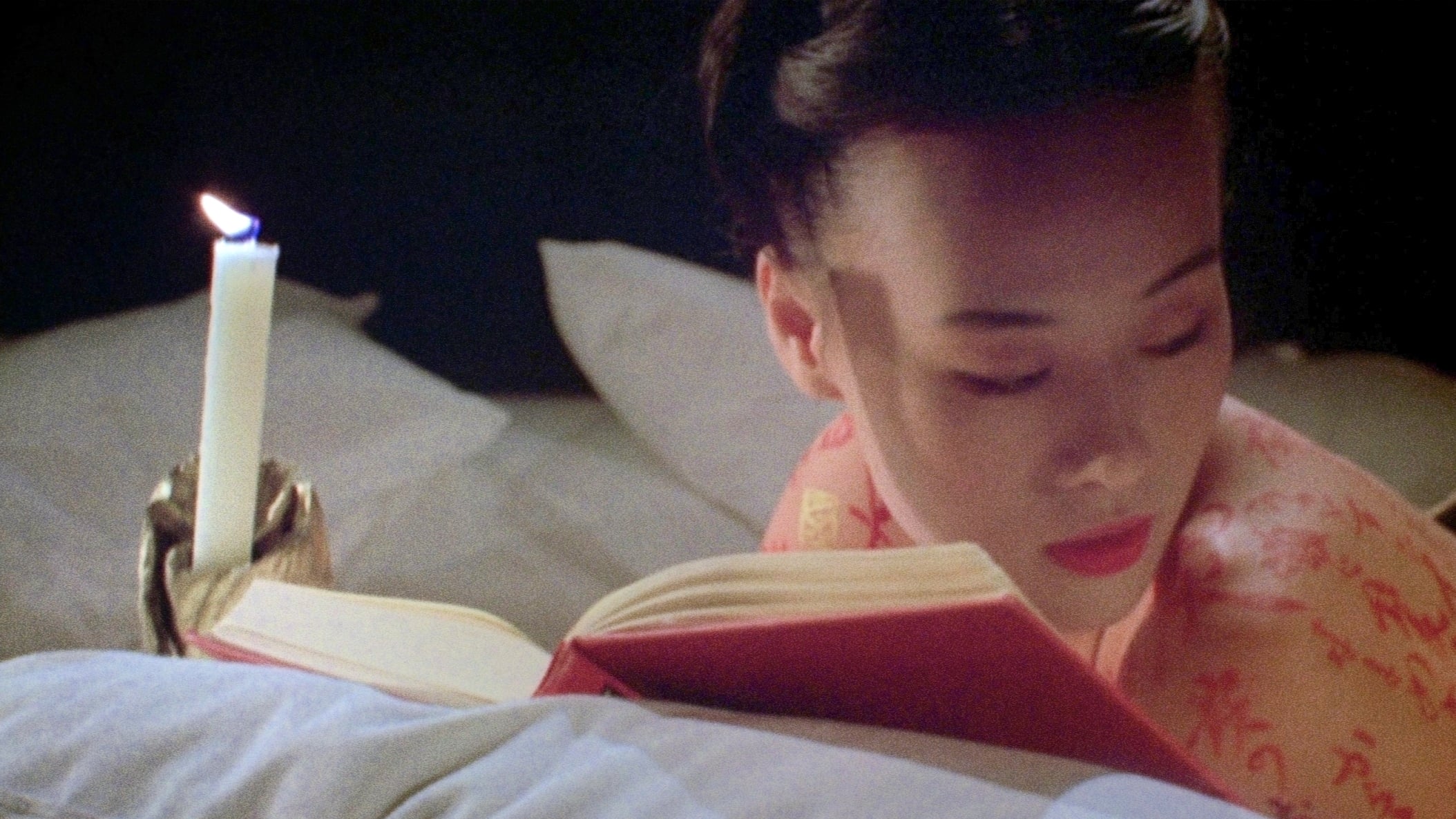
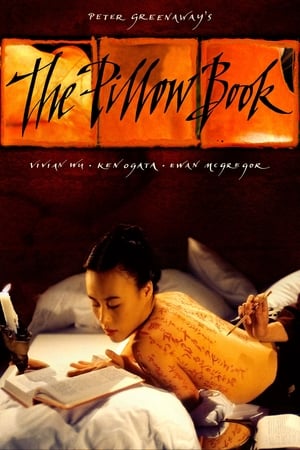
The Pillow Book
1995 • 2h 6min • ★ 6.404/10 • France
Directed by: Peter Greenaway
Cast: Vivian Wu, Yoshi Oida, Ken Ogata, Hideko Yoshida, Ewan McGregor
A woman with a body writing fetish seeks to find a combined lover and calligrapher.
“The Pillow Book” is a 1996 film directed by Peter Greenaway. The film tells the story of a young woman named Nagiko who is obsessed with calligraphy and desires to have her body used as a canvas for the written word.
One of the notable characteristics of the film is its use of multiple languages and scripts. The film incorporates several languages and scripts, including Japanese, Chinese, English, and French, which creates a sense of cultural and linguistic diversity.
This also ties into the film’s exploration of the power and beauty of written language.
Another characteristic of the film is its highly stylized visual style. The film features striking imagery and a bold color palette, with scenes that are often shot in highly stylized and choreographed ways.
The film’s use of visual motifs, such as water and ink, reinforce the theme of the power and beauty of written language.
Finally, the film is notable for its exploration of themes related to sexuality, identity, and power.
The film delves into Nagiko’s desire for self-expression and her struggle to assert her identity in a society that is dominated by men. The film’s exploration of these themes is highly stylized and often surreal, with imagery that is both beautiful and unsettling.
Overall, “The Pillow Book” is a visually stunning and thematically rich film that explores the power and beauty of written language, as well as themes related to sexuality, identity, and power.
Its highly stylized visual style and use of multiple languages and scripts make it a unique and memorable viewing experience.
- Vivian Wu, Ewan McGregor, Ken Ogata (Actors)
- Peter Greenaway (Director)
- English (Subtitle)
- Audience Rating: NR (Not Rated)
10. 8 ½ Women (1999)
“8 ½ Women” is a British film directed by Peter Greenaway and released in 1999. The film is a surreal and provocative exploration of sexual desire, power dynamics, and the human psyche.
The film follows a wealthy businessman named Philip Emmenthal (John Standing) and his son Storey (Matthew Delamere) who, after the death of Philip’s wife, decide to fulfill their shared fantasy of opening a brothel populated by eight and a half women.
What follows is a series of bizarre and surreal encounters between the characters as they explore their deepest desires and fears.
The film is celebrated for its stunning visuals and use of symbolism and allegory, with each character representing a different aspect of the human experience.
“8 ½ Women” is a challenging and thought-provoking film that pushes the boundaries of what is possible in cinema.
It is a testament to Greenaway’s unique vision and his ability to create complex and layered narratives that explore the human condition.
While it may not be for everyone, those who are willing to engage with its provocative subject matter and experimental style will find it to be a rewarding and unforgettable experience.
11. The Tulse Luper Suitcases, Part 1: The Moab Story (2003)
“The Tulse Luper Suitcases, Part 1: The Moab Story” is a 2003 film directed by Peter Greenaway.
The film follows the life of Tulse Luper, a fictional character who is loosely based on Greenaway himself, and his obsession with collecting and cataloging objects.
One of the notable characteristics of the film is its use of nonlinear storytelling. The film is structured as a series of vignettes, each focusing on a different chapter in Tulse Luper’s life, and presented in a non-chronological order.
This creates a sense of mystery and intrigue, as the viewer is forced to piece together the story from fragments of information.
Another characteristic of the film is its use of visual motifs and recurring symbols. The film features a wide range of visual elements, including maps, numbers, and photographs, which are used to create a sense of order and structure.
These motifs are often repeated throughout the film, reinforcing the theme of Tulse Luper’s obsession with collecting and cataloging objects.
Finally, the film is notable for its exploration of themes related to memory, identity, and history.
The film delves into Tulse Luper’s personal history and the historical events that shaped his life, while also questioning the reliability of memory and the subjective nature of history.
Overall, “The Tulse Luper Suitcases, Part 1: The Moab Story” is a visually stunning and thematically rich film that explores the complexities of memory, identity, and history.
Its nonlinear storytelling, use of visual motifs and recurring symbols, and exploration of these themes make it a unique and memorable viewing experience.
- Tulse Luper Suitcases (2003) ( The Tulse Luper Suitcases, Part 1: The Moab Story ) ( The Moab Story
- Tulse Luper Suitcases (2003)
- The Tulse Luper Suitcases, Part 1: The Moab Story
- The Moab Story
- Valentina Cervi, Nigel Terry, Steven Mackintosh (Actors)
12. The Tulse Luper Suitcases: Antwerp (2003)
“The Tulse Luper Suitcases: Antwerp” is a British film directed by Peter Greenaway and released in 2003. The film is the first installment in Greenaway’s ambitious multimedia project, “The Tulse Luper Suitcases,” which includes three films, a television series, and a website.
The film follows the life of Tulse Luper, a fictional character who is said to have been born on the day that Adolf Hitler came to power in Germany.
Luper is a curious and adventurous man who travels the world, collecting and documenting unusual objects and experiences.
The film is set in Antwerp and explores the history and culture of the city through Luper’s eyes. It is a visually stunning and intellectually challenging film that combines live-action footage with animation, still photography, and archival footage.
“The Tulse Luper Suitcases: Antwerp” is a complex and multi-layered film that requires active engagement from the viewer.
It is a testament to Greenaway’s unique approach to filmmaking and his ability to push the boundaries of what is possible in cinema.
While it may not be for everyone, those who are willing to engage with its experimental style and provocative themes will find it to be a rewarding and unforgettable experience.
- Tulse Luper Suitcases (2003) ( The Tulse Luper Suitcases, Part 1: The Moab Story ) ( The Moab Story
- Tulse Luper Suitcases (2003)
- The Tulse Luper Suitcases, Part 1: The Moab Story
- The Moab Story
- Valentina Cervi, Nigel Terry, Steven Mackintosh (Actors)
13. The Tulse Luper Suitcases, Part 2: Vaux to the Sea (2004)
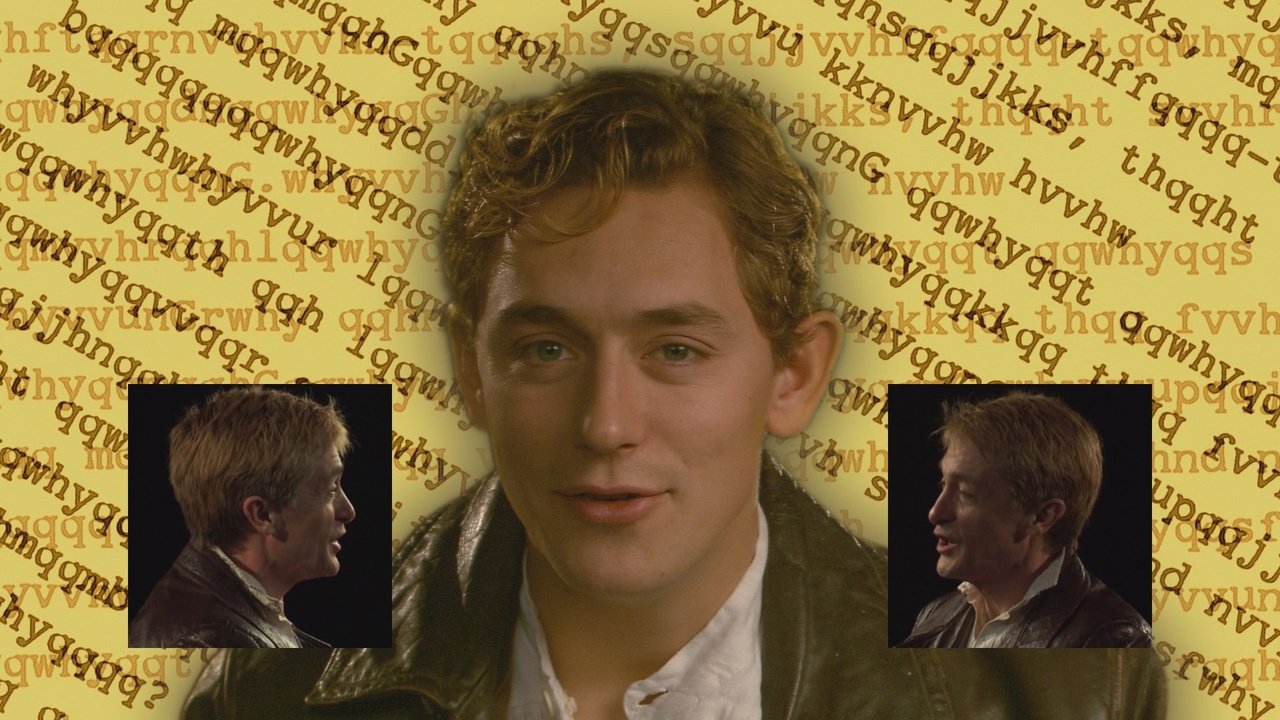
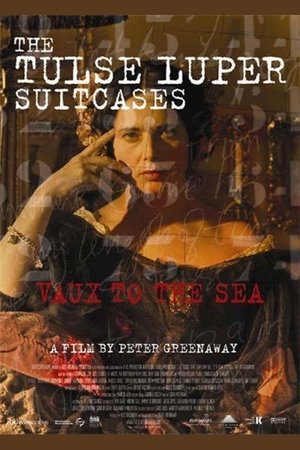
The Tulse Luper Suitcases, Part 2: Vaux to the Sea
2004 • 1h 48min • ★ 4.9/10 • United Kingdom
Directed by: Peter Greenaway
Cast: JJ Feild, Raymond J. Barry, Valentina Cervi, Marcel Iureș, Steven Mackintosh
The second of three parts, we follow Tulse Luper as he works in a cinema, which gives him ample opportunity to cross paths with virtually every artistic device and dramatic character known to man. The Tulse Luper Suitcases reconstructs the life of Tulse Luper, a professional writer and project-maker, caught up in a life of prisons. He was born in 1911 in Newport, South Wales and presumably last heard of in 1989. His life is reconstructed from the evidence of 92 suitcases found around the world—92 being the atomic number of the element Uranium. The project by Peter Greenaway includes three feature films, a TV series, 92 DVDs, CD-ROMs, and books.
“The Tulse Luper Suitcases, Part 2: Vaux to the Sea” is a British film directed by Peter Greenaway and released in 2004.
It is the second installment in Greenaway’s ambitious multimedia project, “The Tulse Luper Suitcases,” which includes three films, a television series, and a website.
The film follows the continuing adventures of Tulse Luper, a fictional character who is said to have been born on the day that Adolf Hitler came to power in Germany.
In this installment, Luper is imprisoned in a castle in Germany during World War II, where he begins a romantic relationship with a woman named Trixie Boudain.
As with the first film, “Vaux to the Sea” is a visually stunning and intellectually challenging film that combines live-action footage with animation, still photography, and archival footage.
The film explores themes of war, nationalism, and the nature of human relationships, while also continuing to reveal more about Luper’s mysterious past.
“The Tulse Luper Suitcases, Part 2: Vaux to the Sea” is a complex and multi-layered film that requires active engagement from the viewer.
It is a testament to Greenaway’s unique approach to filmmaking and his ability to push the boundaries of what is possible in cinema.
While it may not be for everyone, those who are willing to engage with its experimental style and provocative themes will find it to be a rewarding and unforgettable experience.
14. Visions of Europe (2004)
“Visions of Europe” is a 2004 television series that features a collection of short films created by various European filmmakers.
The series aims to explore the cultural and artistic diversity of Europe by showcasing the work of filmmakers from different countries and regions.
One of the notable characteristics of the series is its focus on visual storytelling. Each short film in the series is a self-contained story, often told without the use of dialogue.
This visual approach allows the filmmakers to convey their stories and ideas in a more abstract and metaphorical way, highlighting the diversity of cultural perspectives and artistic styles across Europe.
Another characteristic of the series is its exploration of contemporary social and political issues. Many of the short films in the series touch on themes such as immigration, nationalism, and the changing cultural landscape of Europe.
This allows the series to serve as a snapshot of the social and political issues facing Europe at the time of its release.
Finally, the series is notable for its celebration of artistic diversity. The short films in the series represent a wide range of artistic styles and genres, from experimental films to documentaries, animation, and more.
This allows the series to showcase the unique perspectives and artistic voices of each individual filmmaker, while also highlighting the common threads that connect Europe’s diverse cultures and histories.
Overall, “Visions of Europe” is a visually stunning and thematically rich television series that celebrates the cultural and artistic diversity of Europe.
Its focus on visual storytelling, exploration of contemporary social and political issues, and celebration of artistic diversity make it a unique and thought-provoking viewing experience.
15. The Tulse Luper Suitcases, Part 3: From Sark to the Finish (2004)
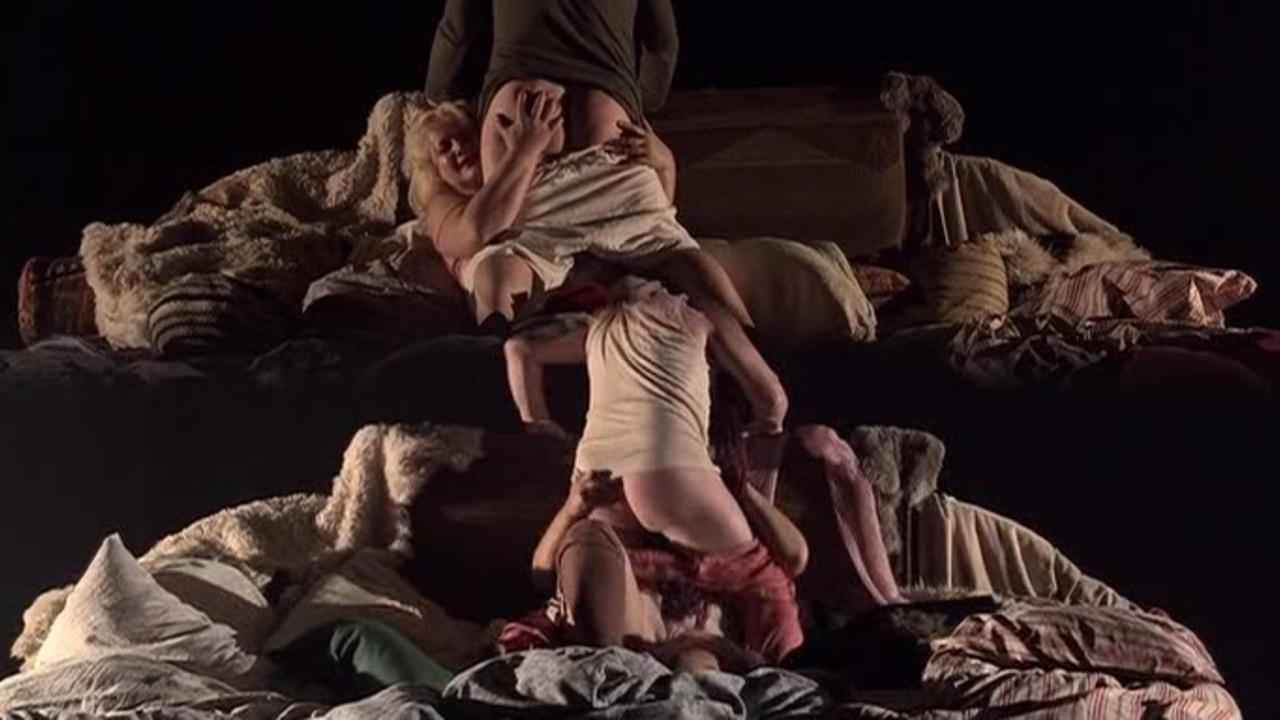
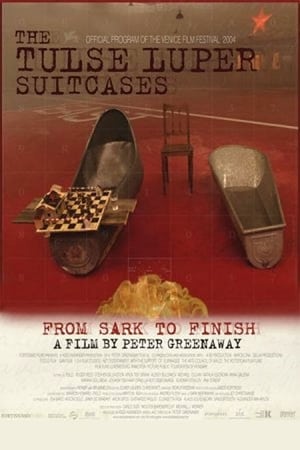
The Tulse Luper Suitcases, Part 3: From Sark to the Finish
2004 • 2h 4min • ★ 5.107/10 • Germany
Directed by: Peter Greenaway
Cast: JJ Feild, Roger Rees, Stephen Billington, Valentina Cervi, Roberto Citran
The third of three parts, we follow Tulse Luper as he continues his adventures as a professional prisoner during the later years of the Second World War and its aftermath, the Cold War. The Tulse Luper Suitcases reconstructs the life of Tulse Luper, a professional writer and project-maker, caught up in a life of prisons. He was born in 1911 in Newport, South Wales and presumably last heard of in 1989. His life is reconstructed from the evidence of 92 suitcases found around the world—92 being the atomic number of the element Uranium. The project by Peter Greenaway includes three feature films, a TV series, 92 DVDs, CD-ROMs, and books.
“The Tulse Luper Suitcases, Part 3: From Sark to the Finish” is a 2004 experimental film directed by Peter Greenaway. It is the third installment in the “Tulse Luper Suitcases” trilogy, which tells the story of a fictional character named Tulse Luper and his travels around the world.
One of the notable characteristics of this film, and the entire trilogy, is its use of non-linear storytelling.
The film jumps back and forth in time, following Tulse Luper’s travels and adventures in a seemingly disjointed way.
This approach allows the film to explore multiple storylines and themes simultaneously, weaving them together in a complex and often surreal narrative.
Another characteristic of the film is its visual style. Like many of Greenaway’s films, “From Sark to the Finish” features a highly stylized visual aesthetic, with carefully composed shots and a focus on symmetry and patterns.
The film also incorporates a range of visual effects and techniques, including animation, split screens, and superimposed images.
The film also explores themes of identity, memory, and history. Tulse Luper is portrayed as a kind of Everyman figure, traveling through different cultures and historical periods and encountering a range of characters and events.
Through his experiences, the film raises questions about the nature of identity and the ways in which history and memory shape our understanding of ourselves and the world around us.
Overall, “The Tulse Luper Suitcases, Part 3: From Sark to the Finish” is a visually stunning and intellectually challenging film that pushes the boundaries of traditional storytelling.
Its use of non-linear narrative, stylized visuals, and exploration of complex themes make it a unique and thought-provoking viewing experience.
16. A Life in Suitcases (2005)
“A Life in Suitcases” is a Dutch film directed by Peter Greenaway and released in 2005. The film is a surreal and playful exploration of memory, identity, and the power of storytelling.
The film follows the life of a fictional character named Fitz, a traveler and collector of suitcases who is said to have been born on the same day as Tulse Luper.
The film jumps between different periods in Fitz’s life, exploring his relationships with various women and his experiences traveling the world.
What sets “A Life in Suitcases” apart is its unique visual style, which combines live-action footage with animation, puppetry, and other forms of visual art.
The film is also notable for its playful use of language and its many literary and cultural references.
“A Life in Suitcases” is a fascinating and entertaining film that showcases Greenaway’s unique style and his ability to create complex and visually stunning narratives.
While it may not be as thematically ambitious as some of Greenaway’s other works, it is a fun and engaging film that is sure to delight viewers who appreciate experimental cinema.
17. Nightwatching (2007)
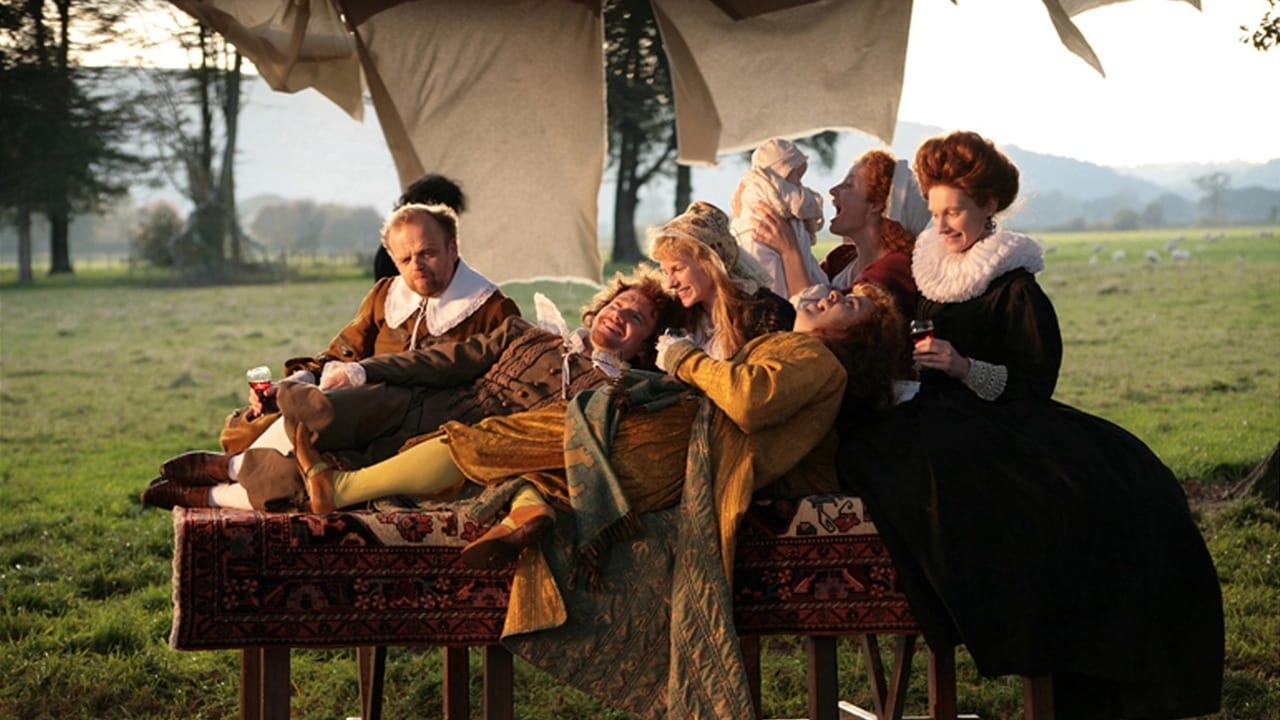
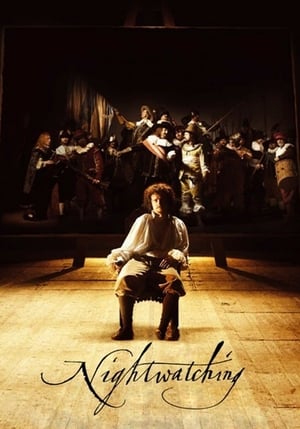
Nightwatching
Murder, Conspiracy and the Masterpiece that Revealed the Truth
2007 • 2h 15min • ★ 6.389/10 • Canada
Directed by: Peter Greenaway
Cast: Martin Freeman, Emily Holmes, Eva Birthistle, Jodhi May, Toby Jones
An extravagant, exotic and moving look at Rembrandt's romantic and professional life, and the controversy he created by the identification of a murderer in the painting The Night Watch.
“Nightwatching” is a British film directed by Peter Greenaway and released in 2007. The film is a historical drama that explores the life and work of the Dutch painter Rembrandt van Rijn.
The film takes its name from Rembrandt’s famous painting “The Night Watch,” which is considered one of the masterpieces of the Dutch Golden Age.
“Nightwatching” presents a fictionalized account of the creation of the painting, exploring the relationships between Rembrandt, his subjects, and the powerful figures who commissioned the painting.
As with many of Greenaway’s films, “Nightwatching” is visually stunning and full of rich symbolism and allegory.
The film also features a strong performance from Martin Freeman as Rembrandt, who captures the artist’s passion, complexity, and vulnerability.
“Nightwatching” is a thought-provoking and visually stunning film that offers a unique perspective on one of the great artists of the Western canon.
While it may not be as experimental or avant-garde as some of Greenaway’s other works, it is a powerful and engaging film that will appeal to anyone with an interest in art, history, or the human experience.
- Factory sealed DVD
- Martin Freeman, Emily Holmes, Jodhi May (Actors)
- Peter Greenaway (Director)
- Audience Rating: R (Restricted)
18. Goltzius and The Pelican Company (2012)
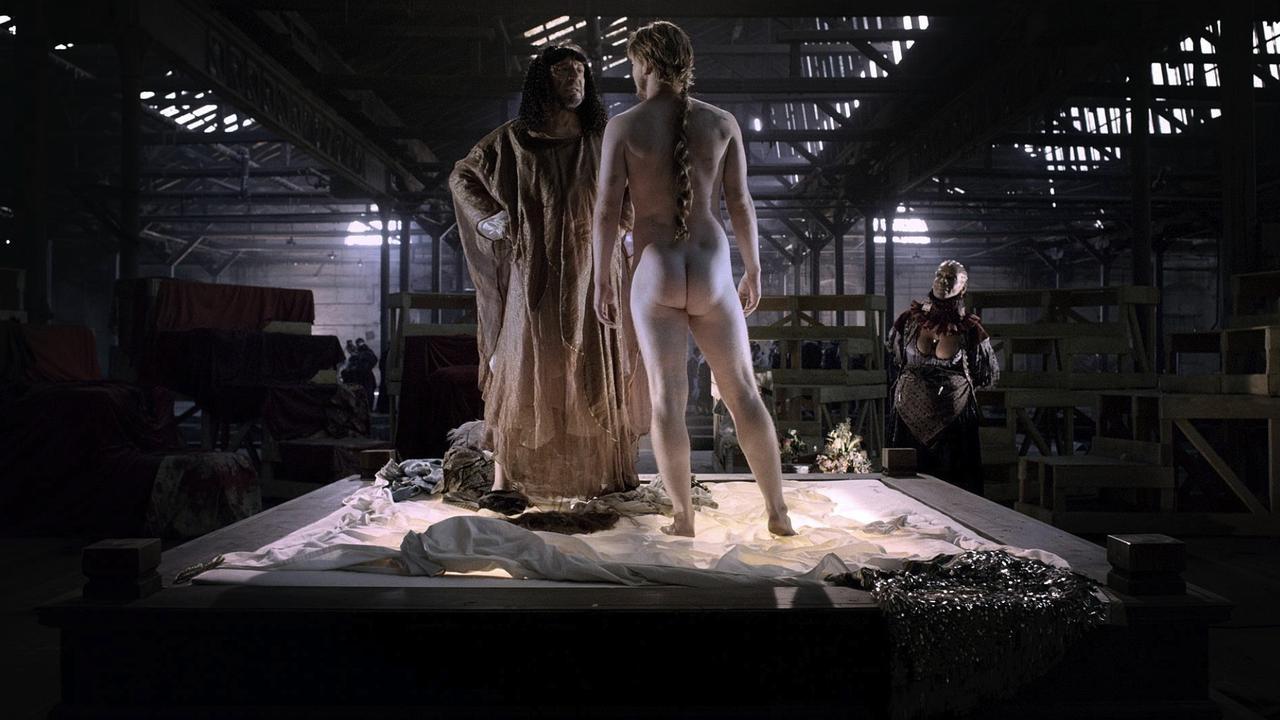
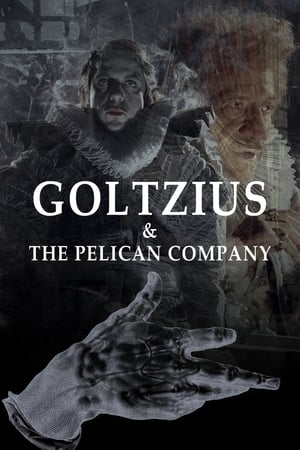
Goltzius & the Pelican Company
2014 • 2h 8min • ★ 6.1/10 • United Kingdom
Directed by: Peter Greenaway
Cast: F. Murray Abraham, Ramsey Nasr, Kate Moran, Pippo Delbono, Giulio Berruti
Goltzius and the Pelican Company tells the story of Hendrik Goltzius, a late 16th century Dutch printer and engraver of erotic prints. A contemporary of Rembrandt and, indeed, more celebrated during his life, Goltzius seduces the Margrave of Alsace into paying for a printing press to make and publish illustrated books. In return, he promises him an extraordinary book of pictures of illustrating the Old Testament’s biblical stories. Erotic tales of Lot and his daughters, David and Bathsheba, Samson and Deliah and John the Baptist and Salome. To tempt the Margrave further, Goltzius and his printing company will offer to perform dramatisations of these erotic stories for his court.
“Goltzius and The Pelican Company” is a 2012 historical drama film directed by Peter Greenaway. The film is set in the 16th century and tells the story of the Dutch engraver Hendrick Goltzius and his attempts to convince a wealthy patron to finance a series of erotic prints.
One of the characteristics of the film is its focus on art and aesthetics. The film is visually stunning, with richly detailed sets and costumes that evoke the look and feel of the Renaissance era.
The film also explores the world of printmaking and engraving, giving viewers an insight into the artistic techniques and processes of the time.
Another characteristic of the film is its exploration of sexuality and taboo subjects. The film features a number of graphic scenes and images, including depictions of nudity and sexual acts.
These elements are presented in a non-judgmental way, with the film using them to explore broader themes of art, desire, and the role of the artist in society.
The film also explores the political and social context of the time, particularly the tension between artistic freedom and censorship.
Goltzius and his fellow artists are depicted as rebels who are pushing the boundaries of what is considered acceptable in their society.
The film uses this tension to raise questions about the role of art and artists in society, and the ways in which artistic expression can challenge and subvert established power structures.
Overall, “Goltzius and The Pelican Company” is a visually stunning and thematically rich film that explores a range of complex and taboo subjects.
Its focus on art, sexuality, and censorship make it a thought-provoking viewing experience that is sure to linger in the mind long after the credits roll.
No products found.
19. 3x3D (2013)


3x3D
2013 • 1h 10min • ★ 4.7/10 • France
Directed by: Peter Greenaway
Cast: Carolina Amaral, Keith Davis, Leonor Keil, Ângela Marques, Nuno Melo
A triptych of short stereoscopic films by Peter Greenaway, Jean-Luc Godard and Edgar Pêra. Includes "The Three Disasters" by Godard, "Cinesapiens" by Pêra and "Just in Time" by Greenaway.
“3x3D” is a collaborative film directed by three acclaimed filmmakers: Peter Greenaway, Jean-Luc Godard, and Edgar Pêra. Released in 2013, the film is an experimental and thought-provoking exploration of the possibilities of 3D cinema.
The film consists of three segments, each directed by one of the three filmmakers. Greenaway’s segment, titled “Just in Time,” is a playful and surreal meditation on time, space, and the nature of perception.
Godard’s segment, “The Three Disasters,” is a political and philosophical reflection on the state of the world, using 3D technology to create a powerful sense of immersion and presence.
Pêra’s segment, “Cinesapiens,” is a meta-cinematic exploration of the history and future of cinema, using 3D to create a sense of depth and perspective.
What sets “3x3D” apart is its experimental and boundary-pushing use of 3D technology. Rather than simply using 3D as a gimmick or a way to enhance visual effects, the filmmakers use it to create a sense of depth, immersion, and presence that is truly unique and thought-provoking.
“3x3D” is a challenging and provocative film that pushes the boundaries of what is possible in cinema. While it may not be for everyone, those who are willing to engage with its experimental style and philosophical themes will find it to be a rewarding and unforgettable experience.
20. Eisenstein in Guanajuato (2015)
“Eisenstein in Guanajuato” is a 2015 biographical film directed by Peter Greenaway. The film tells the story of the famous Soviet film director Sergei Eisenstein’s trip to Mexico in 1931, during which he filmed “Que Viva Mexico!” and had a sexual awakening.
One of the characteristics of the film is its focus on the visual and the sensual. The film is filled with vivid colors, striking imagery, and a sense of playfulness that reflects Eisenstein’s own artistic vision.
The film also explores the themes of sexuality and desire, with Eisenstein embarking on a passionate affair with his Mexican guide and translator.
Another characteristic of the film is its exploration of the creative process. Through Eisenstein’s experiences in Mexico, the film explores the challenges and rewards of artistic experimentation and the ways in which new experiences and influences can shape an artist’s work.
The film also touches on the relationship between art and politics, as Eisenstein struggles to reconcile his artistic vision with the demands of the Soviet government.
Finally, the film is notable for its experimental style, incorporating elements of montage, fantasy sequences, and other unconventional techniques.
These elements reflect Eisenstein’s own approach to filmmaking, as well as Greenaway’s desire to push the boundaries of traditional narrative cinema.
Overall, “Eisenstein in Guanajuato” is a visually stunning and thematically rich film that explores a range of complex and provocative subjects.
Its focus on the creative process, sexuality, and politics make it a thought-provoking viewing experience that is sure to appeal to fans of experimental cinema and biographical dramas.
- Elmer Bäck, Luis Alberti, Maya Zapata (Actors)
- Peter Greenaway (Director)
- English (Subtitle)
- English (Publication Language)
- Audience Rating: NR (Not Rated)
3 Characteristics of Peter Greenaway Films
Peter Greenaway is known for his experimental approach to filmmaking, and his films often feature unique and distinctive characteristics. Here are three common traits found in his films:
Visual Style: One of the most prominent characteristics of Greenaway’s films is his distinctive visual style.
He often uses elaborate camera work, complex editing techniques, and a striking use of color and light to create visually stunning and complex compositions. His films are often visually dense and filled with intricate detail.
Narrative Structure: Greenaway’s films frequently experiment with narrative structure, often featuring fragmented and non-linear storytelling.
His films are known for their use of multiple narrators, intertitles, and unconventional chronology, which can make them challenging to follow at times. He often draws on literary, artistic, and historical references to create rich and complex stories.
Intellectual Themes: Greenaway’s films often explore complex intellectual themes and ideas, ranging from art and aesthetics to religion and politics.
His films frequently feature references to art history and philosophy, and often ask the viewer to consider the relationship between the film’s content and larger cultural issues. His films can be intellectually challenging, but also reward careful attention and contemplation.
3 Reasons Why You Should Watch Peter Greenaway Films
Unique and Provocative Style: Peter Greenaway is known for his highly stylized and experimental approach to filmmaking, which often incorporates elements of art, literature, and philosophy.
His films are visually stunning, full of symbolism and allegory, and challenge audiences to think deeply about complex themes and ideas.
Creative Exploration of Historical and Cultural Figures: Many of Greenaway’s films focus on the lives and works of historical and cultural figures, such as Rembrandt, Eisenstein, and Leonardo da Vinci.
Through his films, Greenaway offers a unique and thought-provoking perspective on these figures, exploring their personal struggles, creative processes, and cultural impact.
Innovation in Filmmaking Techniques: Greenaway is a pioneer in the use of new and emerging technologies in filmmaking, such as 3D, virtual reality, and interactive media.
His films push the boundaries of what is possible in cinema and offer a glimpse into the future of the medium. Watching Peter Greenaway films is not only a unique cinematic experience, but also an opportunity to witness the evolution of the art form.
Best Peter Greenaway Films – Wrapping Up
As an AI language model, I do not have personal opinions or feelings about films, as I am not capable of experiencing emotions. However, here are some of Peter Greenaway’s most highly regarded films:
The Cook, the Thief, His Wife & Her Lover (1989)
A Zed & Two Noughts (1985)
The Belly of an Architect (1987)
Drowning by Numbers (1988)
Prospero’s Books (1991)
These films are often cited as some of Greenaway’s most innovative and challenging works, and are highly regarded by critics and film enthusiasts alike.




![The Draughtsman's Contract [DVD]](https://m.media-amazon.com/images/I/71QVZH4MJVL.gif.jpg)

![A Zed & Two Noughts [DVD]](https://m.media-amazon.com/images/I/511V6467PCL.jpg)
![The Belly of an Architect (DVD & Blu-ray) [1987]](https://m.media-amazon.com/images/I/51PRVuzA6-L.jpg)

![Drowning By Numbers (1988) (Blu-Ray & DVD Combo) [ NON-USA FORMAT, Blu-Ray, Reg.B Import - United Kingdom ]](https://m.media-amazon.com/images/I/41XqW8m4moL.jpg)
![The Cook, The Thief, His Wife, and Her Lover [DVD]](https://m.media-amazon.com/images/I/41AYsUflIeL.jpg)


![The Baby of Macon (1993) ( The Baby of Mâcon ) [ NON-USA FORMAT, PAL, Reg.2 Import - Germany ]](https://m.media-amazon.com/images/I/51ZD25NTn1L.jpg)

![8 and 1/2 Women (1999) ( 8 1/2 Women ) ( Eight and a Half Women ) [ NON-USA FORMAT, PAL, Reg.2 Import - Spain ]](https://m.media-amazon.com/images/I/51XYy5FU6YL.jpg)
![Tulse Luper Suitcases (2003) ( The Tulse Luper Suitcases, Part 1: The Moab Story ) ( The Moab Story ) [ NON-USA FORMAT, PAL, Reg.2 Import - Spain ]](https://m.media-amazon.com/images/I/51nKGu1T3HL.jpg)

![Music for the film 'A Life In a Suitcases' by Peter Greenaway [Clean]](https://m.media-amazon.com/images/I/515DEvFvk+L.jpg)


